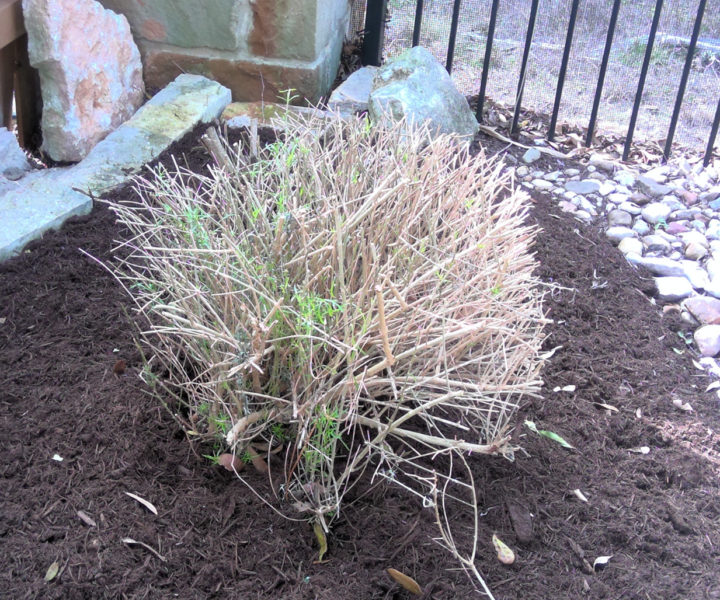Especially after the latest ice storm, you have probably noticed that many of your plants have gone dormant. Will they ever come back? When do plants come out of dormancy in Central Texas? Let’s discuss the reasons behind plant dormancy and what you can expect during this period.

Why do plants go dormant in Central Texas?
Plant dormancy is a state where plant growth slows or stops to conserve energy. This happens in response to environmental triggers such as cooling temperatures, shortened daylight hours, and reduced moisture levels. In Central Texas, the cooler months can cause some plants to enter a dormant state, but this is a natural and temporary process.
What are the advantages of dormancy?
- Increased survival: Dormancy is a natural state that prepares the plant for harsher environments. It may not be as beautiful, but it sure beats dead plants.
- Transplanting: since the plants and trees and grass aren’t growing as rigorously, this is an excellent time for transplanting. The plants tend to experience far less stress in this environment than if you transplanted them at any other time of year.

When do plants come out of dormancy in Central Texas?
Dormancy usually starts sometime in November and ends sometime in February, but each plant’s microclimate significantly impacts this timing.
The timing of when your plants will come out of dormancy will vary depending on the species and the environmental conditions. Smaller plants come out of dormancy quicker than larger plants. However, generally, as the temperatures start to warm up and the daylight hours increase in spring, you can expect your dormant plants to start growing again.
Example 1: There are two red oaks in my cul-de-sac. One of them is exposed on the street and gets blasted with cold air. The other is in my neighbor’s backyard. The one on the street went dormant about 3 weeks before the other.
Example 2: Grass in deep shade goes dormant earlier and stays dormant longer than grass in full sun. We usually think that temperature is the only factor, but the length of day (and the amount of sun) has just as much of an impact on dormancy, if not more.
How to help ease your plants out of dormancy in Central Texas
If you’re eager to see your plants growing again, there are a few things you can do to help break their dormancy. Here are some tips:
- Provide warmth: Mulch is a blanket. It will insulate your plants and moderate temperatures. It also helps retain moisture (see below).
- Keep soil moist: Dormant plants don’t need as much water as actively growing plants, but they still need to be kept moist. Make sure the soil is moist (but not waterlogged) to help break dormancy. Proper irrigation certainly helps.
- Apply fertilizer: As your plants start to grow again, they’ll need nutrients to support their growth. A slow-release fertilizer or an all-purpose plant food can help provide the nutrients your plants need.
Plant dormancy in Central Texas is a natural and temporary process that helps plants conserve energy during the cooler months. As the temperatures warm up and the daylight hours increase, you can expect your plants to start growing again. By providing warmth, sufficient moisture, and the right nutrients, you can help your plants break dormancy and thrive in your yard.

